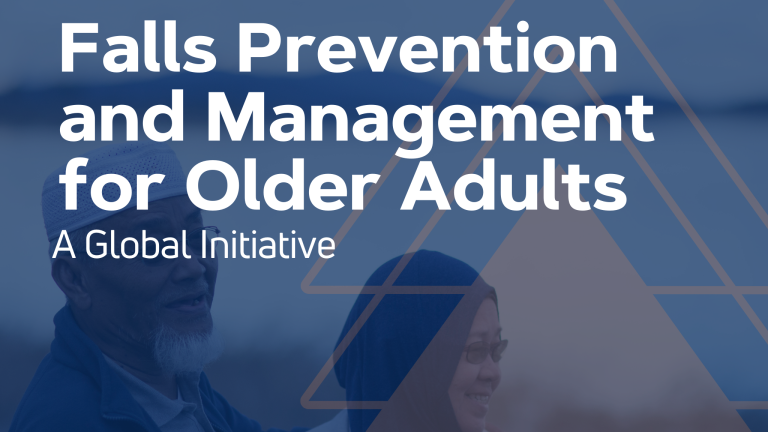Earlier this year Age and Ageing, the scientific journal of the British Geriatrics Society (BGS), published the first World Guidelines for Falls Prevention and Management for Older Adults. This has been highly acclaimed internationally and is already notching up citations and tens of thousands of downloads. Age and Ageing is now delighted to announce the publication of a collection, commentary and editorial to support this groundbreaking work.
The new guideline synthesises evidence, expert opinion and consideration of context to produce practical advice. Evidence on the causes of falls and interventions to reduce risk can be difficult to interpret. To relay the main messages of the guideline for the practitioner, Age and Ageing Editor Rowan Harwood has published an editorial to accompany the guidelines.
Offering more context on this important area of work, Age and Ageing has also today published a new themed collection of falls research. This includes key articles about falls prevention, covering topics such as risk factors, effective interventions and their implementation, views from older people themselves and future perspectives. Lotte Seppala and Nathalie van der Velde were curators of this collection and have also written a commentary which draws on the main findings and poses the question: How to tackle the global challenge of falls?
As older people age, they are at increasing risk of falls which may lead to serious injury and even death, making the prevention and management of falls a critical global challenge. The wealth of evidence to support interventions to prevent falls has been distilled in the World Falls Guidelines. The main elements of an effective falls prevention approach are:
- Falls risk assessment and stratification,
- General recommendations on optimizing physical function and mobility to prevent falls.
- Offering a holistic, multidomain intervention to older adults at high risk of falls, in which their priorities, beliefs and resources are carefully considered.
In recent decades, funding for sustainable and effective falls prevention has been constrained, leading to sub-optimal implementation of falls prevention approaches, which have proved largely ineffective. Future research should focus on understanding the most successful approaches for implementation. To further optimize falls prevention, recent developments include technological innovations to identify and prevent falls, including game-based exercise. Further work is warranted to understand how to best incorporate the concepts of frailty and sarcopenia in falls prevention and management, and this is explored in further detail in Lotte and Nathalie’s commentary.
Age and Ageing is pleased to bring to you this body of work focused on falls in older people:
- World Falls Guideline for Prevention and Management for Older Adults
- Editorial: The World Falls Guideline
- Commentary: How to tackle the global challenge of falls?
- Age and Ageing themed collection of falls research


